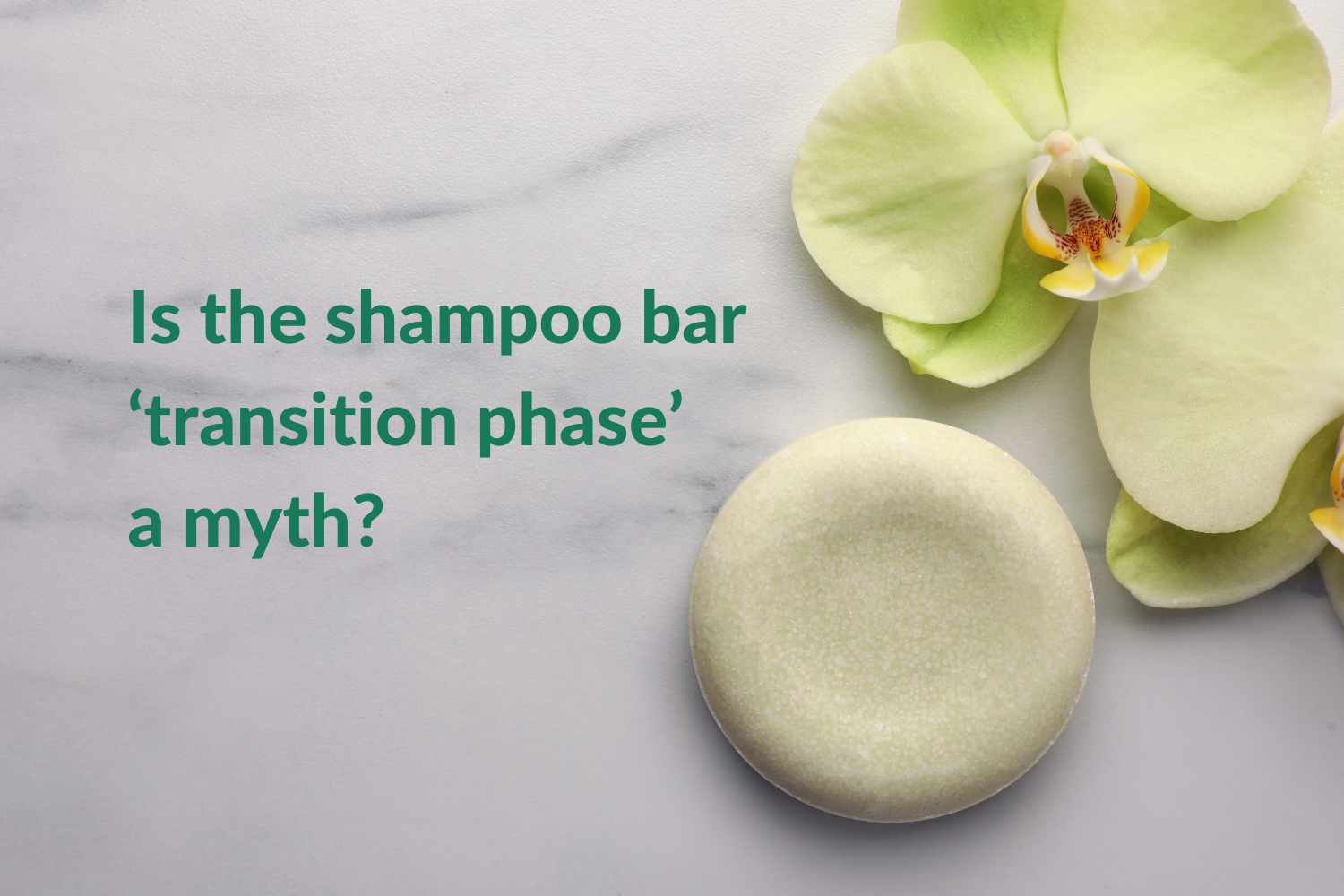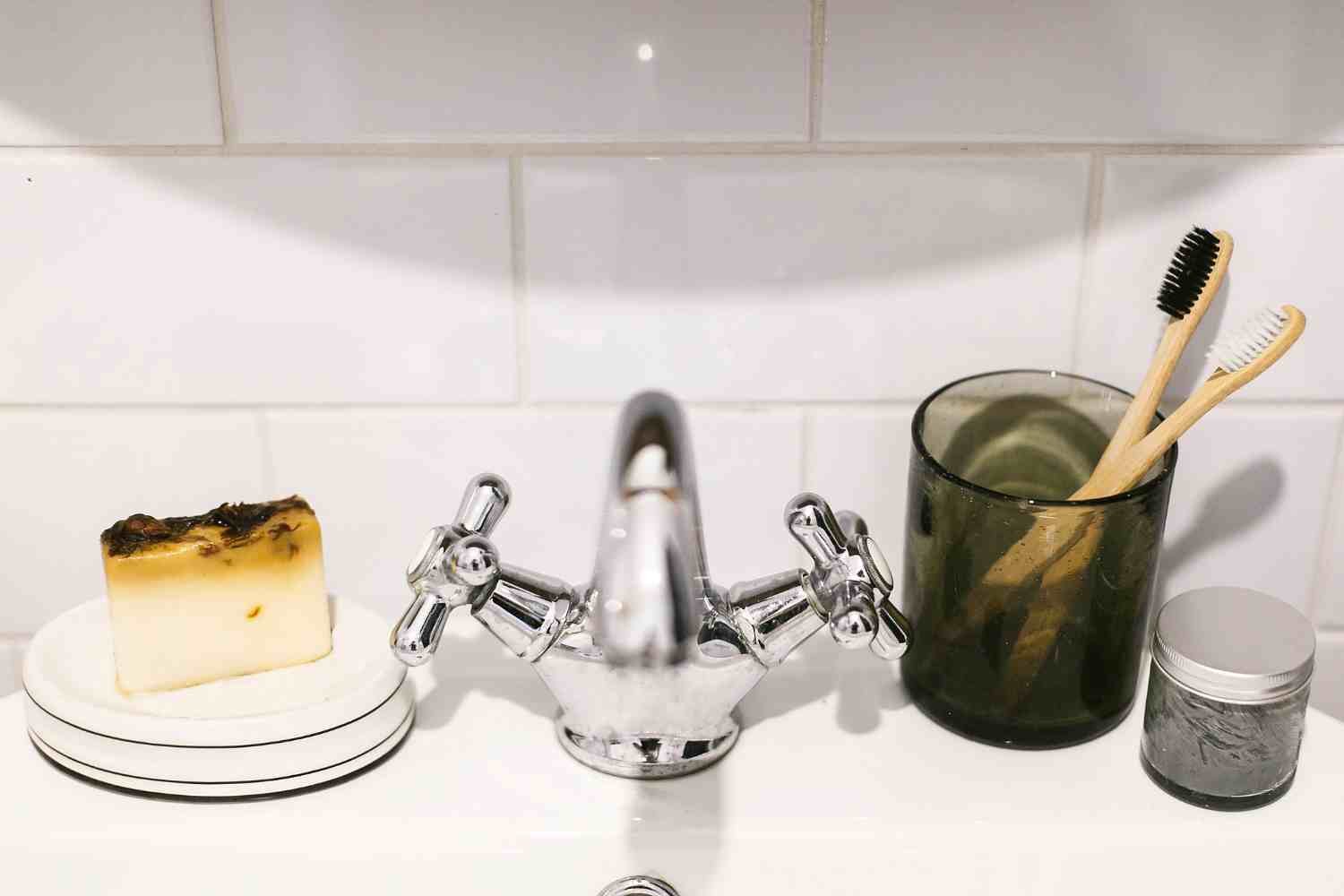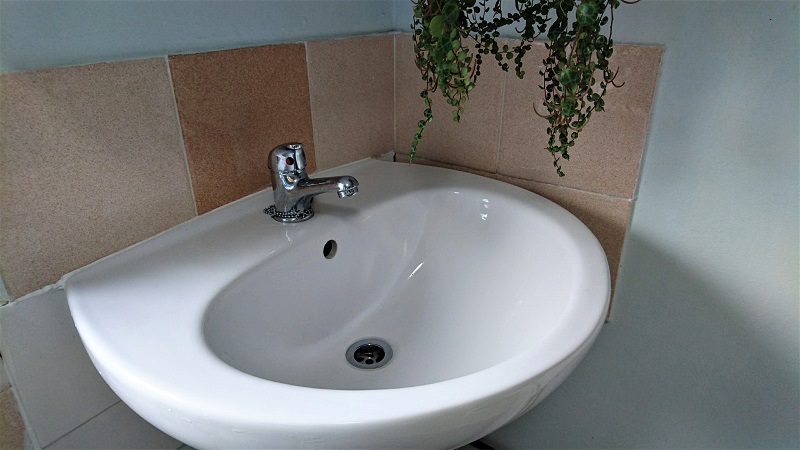What’s in your sunscreen and is it really reef-safe?
This beginner's guide to reef-safe sunscreen will help you read the ingredients list and find out which UV chemicals are hidden inside.
This blog post is out of date and is currently being updated.
The words “reef safe” often show up on sunscreens in the UK and US.
But did you know that the term is often used by brands that greenwash?
With worries about health and coral reefs at an all-time high, I decided to explore whether sunscreens are genuinely reef-safe or if it’s just another way to greenwash customers.
I’m also going to break down the different types of sunscreens and explain the health impacts and environmental risks of UV chemical and mineral filters.
Disclaimer:
I have spent a lot of time reading ingredient lists and scientific studies so I could work out which products use eco-friendly ingredients, however, I am not a scientist and this post should not be used to ignore medical advice. I have linked my sources in the text so you can do your own reading. Always wear sun cream to protect yourself from skin cancer.
Let’s be friends! Tap the icon to follow me on social media:
Coming up
What are the different types of sunscreen?
How can I tell if my sunscreen is chemical or mineral?
Mineral vs. chemical sunscreen - which is better?
What is a hybrid sunscreen?
What is reef-safe sun cream and is it regulated?
Do UV chemicals in sun cream go down the drain?
The most common chemical filters in sunscreen
1. What are the different types of sunscreen
Let’s start with the basics. There are two types of sun cream - chemical sunscreen and mineral sunscreen.
Mineral sunscreen acts as a barrier; it covers the skin and deflects the sun's rays.
Chemical sunscreen sinks into your skin and has added ingredients to absorb UV light.
Hybrid sunscreen contains mineral and chemical filters.
Both types of sunscreen are effective at reducing the risk of sunburn, skin cancer and damage to the skin.
So which is better for you and the environment?
How can I tell if my sunscreen is a chemical or mineral sunscreen?
As there is a long list of chemical UV filters, it can be hard to work out if a product is a mineral or chemical sunscreen.
This is my speedy way of working it out…
There are two mineral ingredients found in sunscreen called Zinc Oxide and Titanium Dioxide. If you cannot see these two ingredients, it means you have a chemical sunscreen.
It is slightly harder to figure out if your sunscreen is 100% mineral because many brands create hybrid formulas that contain both types of UV filters.
If you want a 100% mineral sunscreen, look for products advertised as “mineral sunscreen” and then check the ingredients list for Butyloctyl Salicylate.
Butyloctyl Salicylate is similar to the chemical filter Octisalate but is listed as an “inactive” ingredient, meaning companies can sneak it into their products and still label it a mineral sunscreen. Even though it technically isn’t.
To be 100% sure you’re getting a mineral sunscreen, you’ll need to check the ingredients list for chemical filters (I have a list further down this post).
2. Mineral vs chemical sunscreen - which is better
Everybody is different so of course we all have different preferences when it comes to sunscreen.
Here are the benefits and problems with mineral and chemical sunscreen to help you figure out what is more suitable for your skin.
Mineral sunscreen
PROS:
Mineral sunscreen doesn’t sink into your skin so it is less likely to clog pores or cause acne
It deflects the heat away from your face which is useful for anyone prone to redness from the heat.
Less likely to irritate sensitive skin and rosacea.
Effective as soon as you apply it. You don’t have to wait 20 minutes before going outside.
CONS:
Many mineral formulations are thick and can sometimes be harder to apply
Some products can feel greasy, it can be trial and error
Mineral sun cream is quite pale and can leave a white residue so many formulas are undesirable to people of colour
Some mineral sunscreens use tiny mineral particles called nanoparticles. While research shows they don’t have any adverse health effects when applied to the skin. Inhaling titanium dioxide can be harmful when inhaled so should be avoided in aerosol sunscreens.
Chemical sunscreen
PROS:
Chemical sunscreen is lightweight and can be easier to apply
They are easier to apply to darker skin tones because they absorb into the skin rather than create a barrier on top of it.
CONS:
Because chemical sun cream sinks into your skin, it is more likely to clog pores and cause acne
Multiple chemical filters are harmful to sea creatures and coral reefs
Some chemical filters are suspected hormone disruptors, but there is not enough research on humans
There is also a higher chance of having an allergic reaction to the active ingredients themselves or the other added chemicals included in mainstream brands, like preservatives and fragrances.
You have to wait 20-30 minutes before going in the sun once it has been applied
3. What is a Hybrid sunscreen?
A hybrid sunscreen contains a mixture of chemical and mineral UV filters, meaning it reflects and absorbs the sun's rays.
Many sunscreens on the market advertise their products as mineral when they are actually hybrids.
4. What is reef-safe sun cream & is it regulated?
Reef-safe is an unregulated term with no official guidelines that people agree upon or use.
The whole thing is a bit sketchy and the term is often greenwashed. So let’s have a look at how it came to be.
I’m sure you’ve heard by now that some ingredients in sunscreen have been linked to coral bleaching.
Studies found that chemical filters in sunscreen can cause viral infections in coral reefs, causing them to turn white (hence the name coral bleaching).
This led to multiple places, including Hawaii, banning the most commonly studied UV filters, Oxybenzone and Octinoxate.
In response to the ban, companies started marketing their products as “reef safe” so consumers would believe they were eco-friendly.
But different places have banned different ingredients.
Palau In Oceania was the first country to ban 10 sunscreen ingredients that are either toxic or potentially toxic to coral reefs. They are taking the approach that ingredients should be proven safe first, which many environmentalists prefer.
However, some scientists say the evidence is flawed and the impact of a ban is negligible in the big picture. The main cause of coral bleaching is climate change and we should be putting more effort into preventing global warming than buying expensive products. A valid point.
If you study sunscreen ingredient lists, you’ll quickly see that one reef-safe product will contain chemical filters that another reef-safe brand claims are unsafe.
So how do we know what is correct when nobody can agree?
I don’t put much weight on the term reef-safe as it isn’t regulated but I still look for products that are the least harmful to the environment and my skin.
That involves looking for skincare made without fossil fuels, microplastics, hormone-disrupting ingredients (such as phthalates), and third-party certifications, such as Soil Association organic.
To me, supporting small ethical businesses with a positive environmental impact over a polluting corporation is a way to fight climate change.
5. Do chemicals in sun cream go down the drain?
You may be thinking, I don’t even swim in the sea, do I need reef-safe sunscreen?
The fact is, UV filters aren’t the only concerning ingredients in sunscreen.
For example, when the microbeads ban came into place, it only included rinse-off products.
Microplastics are still legally allowed in personal care products, like sunscreen, which get rinsed off down the drain when we have a shower.
Not only are water companies not doing anything about microplastics (including not monitoring them in drinking water - I asked recently!), but they have been dumping untreated sewage into our rivers and seas for over a decade.
In 2021, Southern Water was fined £90m for "deliberately dumping raw sewage" into the ocean during 2010-2015 because it was cheaper than treating it.
In 2023, there were 464,056 sewage discharges recorded in England: a 54% increase since the year before.
So while I agree that opting for reef-safe products, isn’t a solution, it feels better to do something than to watch our government do nothing.
The risk of ingredients getting to coral reefs is arguably much lower in places like the UK, but more information is needed to show that UV filters aren’t harmful to the fish and aquatic life in British rivers and coastal water.
6. Most Common Chemical filters in your sunscreen:
Ultraviolet (UV) filters are chemicals that absorb UV rays and turn them into light or heat before releasing them from your skin.
They are considered to be emerging pollutants and some can bioaccumulate in the body.
Here is more scientific information on the health and environmental impacts of the following UV chemical filters:
Oxybenzone (Benzophenone-3)
Octinoxate (Ethylhexyl Methoxycinnamate)
Homosalate
Octisalate
Octocrylene,
Avobenzone.
Oxybenzone
Other names: Benzophenone-3
You’re probably familiar with oxybenzone as it used to be one of the most commonly used UV chemical filters.
In recent years, it has been banned in Hawaii, Key West, Florida, Palau, the U.S. Virgin Islands, and some ecotourism reserves in Mexico because of its potential toxic effects on coral reefs and marine life.
However, it is worth noting that the labs used higher amounts in the coral reef studies than is found in the environment so some scientists argue that this research is flawed.
Health risks:
The EU has classified Oxybenzone as an endocrine disruptor (mimics and alters hormones)
It’s a common allergen and can cause eczema/contact dermatitis
Medium-high levels of oxybenzone in pregnant mothers have been associated with Hirschsprung's disease (a rare birth defect in which nerves are missing from parts of the intestine causing the bowel to get blocked)
In 2022, the EU decided the amount of oxybenzone allowed in body products was “unsafe” and lowered the limit to 2.2%. In the US, the limit is 6%.
Approximately 97% of the people tested have oxybenzone present in their urine, and it has also been found in breast milk. However, there is no scientific evidence it is harmful to humans in the current dose.
Environmental issues:
An EU study tested Spain’s seawater for 6 months and oxybenzone was found in 83% of samples.
Oxybenzone was also found in all samples of wastewater with more than 50% being removed suggesting that skincare products can end up in water sources
Oxybenzone has been found to bioaccumulate in marine animals, which makes its endocrine disruption more concerning
Octinoxate
European name: Ethylhexyl Methoxycinnamate (look for this on labels)
Ethylhexyl Methoxycinnamate filters UVB rays; it is the second filter banned in some US states because of the potential risk to coral reefs and marine life.
Following a 98-page toxicology report, the Scientific Committee on Consumer Safety (SCCS) announced in 2024 that they couldn’t confirm if this UV filter is safe because they do not have enough safety data concerning genotoxicity and endocrine disruption.
They’re not saying it causes cancer, but that they can’t rule it out.
It is currently allowed in skincare products at 10% in the EU and 7.5% in the US, so I am guessing the EU will soon restrict it further.
Health risks
The EU has listed it as a likely endocrine-disrupting chemical which means it can mimic hormones.
Animal studies have found it can alter thyroid hormones and cause birth defects in the reproductive organs in male and female fetuses.
It can be absorbed into the blood after one application. It can also be found in breast milk and urine.
Environmental risks
Suspected to be toxic to fish and amphibians.
Widely found in fish and sea creatures near water treatment plants
This link will show you which brands are using Octinoxate in sunscreen and makeup. Most brands that market as eco-friendly or natural in the UK avoid it, however, I’ve seen it in Toddle Sun + Wind Balm and The Body Shop.
WHAT TO LOOK FOR ON THE LABEL: Octinoxate, Octyl methoxycinnamate (OMC), Parsol MCX or MOX, Escalol, Ethylhexyl methoxycinnamate,
Here is what a bleached coral looks like:
Photo by think4photop via Getty Images
Octocrylene
Other names: Octocrilene
Octocrylene is a UVB filter that is included in many sunscreens that have been marketed as “reef safe” in the UK and USA.
It is used to stabilise the UVA filter avobenzone and has been banned in Hawaii, Palau and the US Virgin Islands. France is currently trying to impose a ban on the substance due to its risk to the environment and drinking water sources.
Health risks:
In 2021, research was published revealing octocrylene breaks down into a carcinogenic, hormone-disrupting substance called Benzophenone. While this sounds alarming, the European Union has concluded it is still safe for humans in the quantities used in skincare products.
Octocrylene is a moderate skin sensitiser that has a small risk of causing allergic contact dermatitis (Source - SCCS)
Environmental risks:
Octocrylene has been widely found in fish and other sea creatures in rivers and water sources located near wastewater plants
Multiple studies have found it affects the developing brain and liver in zebrafish (1, 2, 3).
It is under evaluation in the EU to determine whether it is persistent, bioaccumulative, and toxic which means it can accumulate in fish, humans, and the environment
Is octocrylene reef safe?
Octocrylene is used in most reef-safe sunscreens in the UK and in places it is not banned in the US, but that doesn’t mean it is eco-friendly.
As reef-safe is an unregulated term, anyone can use it without giving evidence.
The term gives the impression that the product must be safe from an environmental perspective, but coral reefs aren’t the only living thing exposed to UV filters.
Studies show that octocrylene is widely found in fish, sea creatures, and fish embryos in rivers and seas where people swim and from wastewater facilities that either dump sewage or cannot filter it out.
The EU currently considers octocrylene as a potential endocrine disrupter due to the studies performed on animals. It is also investigating whether it is persistent, accumulative, and toxic.
There is currently not enough data on the impact on seafood or our food chain.
So while octocrylene may be considered safe for human skin in the current dose, and safe for corals, it doesn’t appear to be the most sustainable choice for local wildlife.
Sunscreen considered eco-friendly or natural using Octocrylene:
Gruum
Jason (only the chemical ones)
Aloe Pura Sun Lotion
Child’s farm
The Body Shop
Sun Bum















